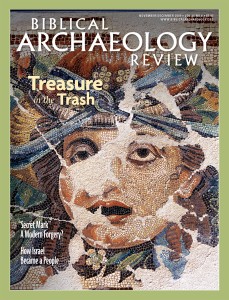ReView: Dead Sea Scrolls Reflect Political History
The first generation of Dead Sea Scroll scholars in the 1940s and 1950s was fascinated with trying to identify the historical figures who might be referred to in the scrolls. They were identified not by name, but by a kind of coded sobriquet—the Teacher of Righteousness, the Wicked Priest, the Wrathful Lion, the “Seekers-After-Smooth-Things.” Leading scholars like Frank Moore Cross, Jozef T. Milik and Geza Vermes tried to identify the historical referents of these nicknames, people who lived when Judea was ruled by the Jewish Hasmonean dynasty (142–37 B.C.E.).
While consensus was reached on some of these figures—for example, the Wrathful Lion was Alexander Jannaeus (103–76 B.C.E.), for other figures (in particular the Teacher of Righteousness), no identification was universally accepted.
This state of affairs was complicated by the lack of a final publication of Roland de Vaux’s excavations at Khirbet Qumran. Without definitive archaeological evidence and frustrated by the cryptic nature of the historical allusions in the scrolls, many scholars simply abandoned attempts at historical reconstruction and concentrated instead on the scrolls as a literary corpus.
Hanan Eshel seeks to rectify that situation in his valuable new book, which he describes as “an effort to integrate the disciplines of archaeology, history and Qumran studies, demonstrating how the Qumran scrolls can contribute to our understanding of the Hasmonean Period.”
Eshel relies not only on the scrolls and the archaeology of Qumran, but also on other historical books from this period, especially Josephus, and on the archaeology of Greco-Roman Judea. Our archaeological knowledge of this period has exploded since the scrolls were discovered.
Already a library member? Log in here.
Institution user? Log in with your IP address.

